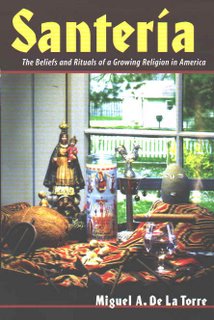 Evangelicals tend to neglect a great number of religious groups in their understanding and analysis of America's religious diversity. This is especially true of those in countercult ministry. Years ago Keith Tolbert wrote an interesting document titled the "ARC Cult Literature Index-1987, Module 4." For me the most interesting part of this document was the section that analyzed Christian "cult-monitoring" literature. After surveying the literature, Tolbert wrote:
Evangelicals tend to neglect a great number of religious groups in their understanding and analysis of America's religious diversity. This is especially true of those in countercult ministry. Years ago Keith Tolbert wrote an interesting document titled the "ARC Cult Literature Index-1987, Module 4." For me the most interesting part of this document was the section that analyzed Christian "cult-monitoring" literature. After surveying the literature, Tolbert wrote:"In ratio to the entire analytical literature body, Mormonism constitutes 54.59%, Jehovah's Witnesses make up 14.75%, the New Age is 9.34% and cults, in general, comprise 4.1%. However, together these four categories comprise an overwhelming 82.79%! The remaining 31 categories combined as a mere 17.21% of the total analytical literature. It is interesting to note that not one article on Islam or Judaism appeared in all of this literature in 1987. In fact, they become conspicuous by their absence."Tolbert went on to speculate as to why a handful of groups receive such a high concentration of treatment by the countercult. He felt that "one major reason for the article disparity is the perceived danger of these groups" (emphasis in original). I agree with Tolbert's reasoning, and although this document was written in the late 1980s, and no doubt some expansion of focus has taken place, I would conjecture that there still exists a large disparity between religious groups that receive analysis by the countercult, and that the perception of threat to the church and orthodoxy are the (perhaps unconscious) factors.
One of the religions that receives little treatment is Santeria. I was looking through various issues of Books & Culture recently and came across an advertisement for a book on the topic titled Santeria (Eerdmans, 2004) by Miguel A. De La Torre. I found an interview with De La Torre by the book's publisher, and was pleased with the author's treatment of the topic. He brings an approach that seeks to understand the religion on its own terms without imposing EuroAmerican cultural or evangelical doctrinal perspectives. De La Torre also notes that while American Christians tend to view Santeria as a "demonic cult," the religion plays an important part in maintaining a sense of identityfor the oppressed and marginalized who are threatened by the mainstream religious culture.
I was not only impressed with De La Torre's approach to Santeria, but a review of his website reveals an interesting body of work on cross-cultural theologizing and mission, religion and popular culture, and other areas of interest. Dr. De La Torre is associate professor at Iliff School of Theology in Denver. I hope to secure his book, and I'd recommend it to anyone interested in Santeria as well as those interested in a sound scholarly and Christian approach to a growing religious movement often ignored by evangelicals.
3 comments:
John
most stuff is written about the gropus who do the most proselytizing. Christians want to know how to answer the JW's and Mormons who come to their door. Most Christians are not interacting with Santeria. It hasn't reached the "tipping point." energy is focused on the most imminent danger to the audience targeted.
I appreciate your perspective on this issue, and I believe it represents much of the thinking in the countercult. However, it misses the point Tolbert was raising. His claim was that the vast bulk of countercult examination and critique is focused on a small handful of groups based upon the *perceived* threat or danger of a group to evangelical Christianity, which may or not be accurate. This perception may be based upon size, as you state in your comment, but size alone is not the determining factor. There are groups that are growing at a greater rate than Mormonism (as Gerald McDermott points out in his article on Mormonism as a world religion in Books & Culture which I commented on previously), and yet they do not receive any attention from countercult personalities. Therefore, the perception of danger is based upon size, but perhaps more so on the close proximity of certain Bible-based groups to evangelical orthodoxy that evangelicals heretical. But the main point is that the countercult is responding based upon perceptions of threat, rather than other important considerations, and in the process ignoring a host of other important religious and spiritual phenomena.
If this assessment is correct, then it also confirms that the main thrust of countercult efforts really is aimed at theological boundary maintenance for the evangelical community, rather than evangelism and missions. In addition, it would also lend credibility to assertions that the countercult inappropriately uses an internal boundary maintenance approach as an evangelistic model.
John,
Fascinating observation about the countercult litrature.
So, in the same way the world missions community has largely ignored the New Age in the past because it is largely perceived as a Western phenomena (ie not in my back yard), the countercult community has largely ignored it because it is more theologically distant than Mormonism and JW and less agressive in prostelization tactics (again, not at my front door).
So NIMBYism rules! In the meantime Christianity in Australia and Europe has become marginalised by irreligious spirituality whilst the watchmen struggled with their myopia.
Post a Comment